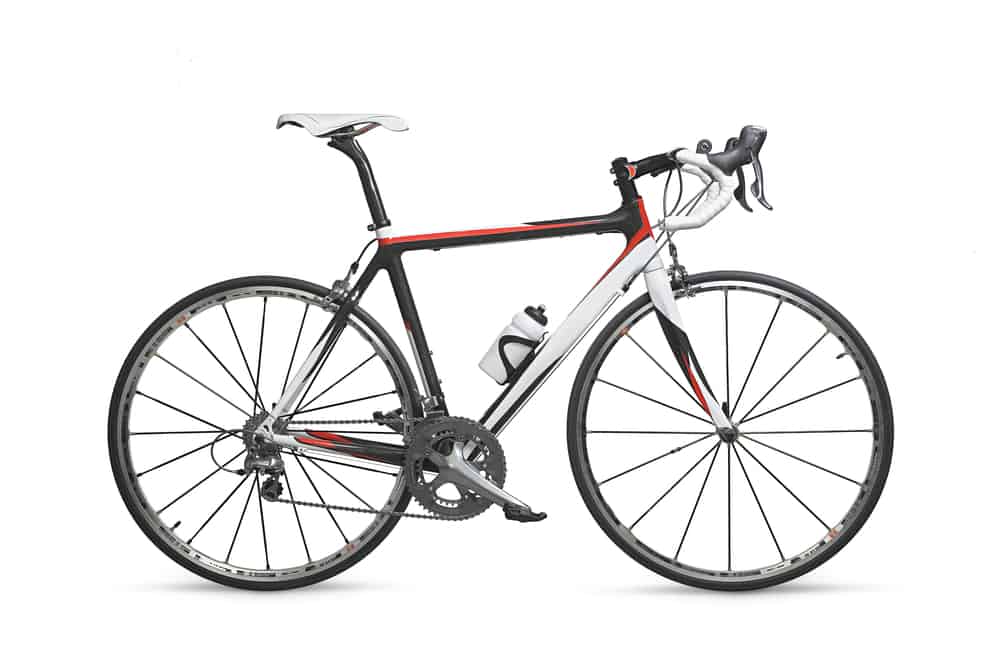As plus-sized, you often wonder whether you can ride road bikes. You’ll be happy to know that you can! Yes, big and heavy people CAN ride a road bike.
The catch is that you must be wary about the weight limit on different road bikes before you start riding one.
If you’d like to lose weight, get some exercise, or go on an adventure, just ride a bike!
We know it can be pretty difficult to make up your mind on this, which is why we’ll explain about road bikes, their weight limits, and what you must keep in mind when choosing one.
What is A Road Bike?
Technically, it’s a bike that has been designed for use on paved roads or surfaces, including pavement and sidewalks.
The road bike is a traditional bicycle that hasn’t changed much in design over the last 50 years. Its features set it apart from hybrid, touring, commuting, and mountain bikes.
With a sleek look, road bikes often look ‘fast,’ which is why they’re sometimes called racing bikes.

Features of A Road Bike
There are some defining characteristics of a road bike:
- The frame, wheels, and components are very lightweight.
- The handlebars have a dropped and curling appearance. However, you can find some with flat bars like a mountain bike.
- A small seat or saddle.
- It uses derailleur gears, although single-speed and fixed-gear varieties also exist.
- Aerodynamic-built and cuts through the air more efficiently
- Lots of clogs or gears on the back wheel
- Narrow wheels and thin tires reduce friction and improve speed.
- No front or rear suspension
- It uses either a disc brake or rim brake.
- A carbon fiber (composite) front fork
What is A Road Bike Used For?
Professional as well as leisure cyclists commonly use these classic bikes. Most often, individuals start with road bikes for speed and efficiency.
Here are some of the purposes a road bike can be used for:
- It helps fitness enthusiasts get good exercise.
- Healthy eating habits and cycling help maintain a healthy weight or even lose weight.
- Events and competitive riding
- Commuting to work, but on paved surfaces
- Running daily errands
- Serves as an adventure bike on flat terrains and some off-road paths
- Suitable for vehicle-supported multiday touring

Why Road Bikes Have Weight Limits
We know how frustrating it can get for heavier riders to find a suitable road bike from their local bike shop.
There are weight limits for a road bike that are imposed, keeping in mind the rider’s safety. Typically, most road bikes feature weight limits of about 275-300 pounds (125-236 kg) because of the bike’s size and stature.
With thin frames, wheels, and limited width, road bikes can only support a rider up to a specific size. Beyond this size, the rider’s center of gravity gets affected.
The larger the rider, the harder it is to balance the bike.
Let’s Break It Down
There’s no denying that riding a bike is an excellent way of losing weight and getting some exercise for improved cardiovascular health.
As an overweight person, riding over the weight limits of a road bike could put you in danger. These weight limits come from the reaction of different materials to pressure and stress.
Most bikes are made of carbon or aluminum. You’ll be surprised to know that an aluminum bike frame can withstand up to 1400 lbs. (635 kg) pressure, while a carbon one has a capacity of over 2,000 lbs. (907 kg) pressure.
Hold on! We’re talking about the bike frame ONLY.
When the other components of the bike, like the wheels and seat, are considered, they bring the weight limit of the cycle considerably down. It usually comes down to about 300 lbs. (136 kg).
We know that’s a real disappointment for a lot of heavy riders!
Let’s not forget about gravity, which determines how much weight a bike can hold. The bike frame’s width and the wheels are barely a few inches.
It’s within these few inches that the rider’s center of gravity must be focused for a good balance of the bike. An overweight rider over the 250 lbs. (113 kg) range has a width much larger than the bike’s width, making it difficult to keep balance on the bike.
Fun Fact: The more spokes a bike has, the more weight it supports.

What to Consider When Choosing a Road Bike If You are Overweight
Heavy riders don’t have to give up on cycling just because they can’t use a regular bike.
Here’s all you’ve to keep in mind to find the right bike and get started:
Wheels
Go with a wheel size that makes riding comfortable for you, apart from offering stability. This means choosing a wheel size of 26″, 27.5″, or 29”.
Smaller wheels are generally stronger than larger ones as they reduce the bike’s overall weight. You can even cycle faster with smaller wheels like the 26-inch ones that are typical with modern bikes.
With the slightly bigger 27.5″ wheels, riding gets a little slower. However, you do get more control and stable riding.
The biggest 29″ wheels are perfect for off-road, bumpy, and challenging terrains.
Look for wheels that have at least 24 spokes on the rear wheel. We suggest 28, 32, 36, or even 40 spokes for more weight support.
Tires
Thicker tires offer increased stability both on and off-road. Wider tires provide more comfort and cushioning, and you can even ride at lower tire pressure.
Frame
The essential part of a bike for an overweight person is the frame. You’ll need one with a robust frame for the bike to carry your extra weight.
We recommend steel or aluminum frames as they’re much stronger than titanium or carbon fiber.
While steel is considered the strongest, it’s heavy to handle. The lighter, durable, and less expensive aluminum alloy is the best pick for a frame.
Gearing
The more gears in a bike, the more speed it can attain and the costlier it gets.
If it’s only flat terrains you intend to ride on, you can save money by getting a bike with fewer gears.
Brakes
The brakes on your bike will have to work hard with all your weight on them. We suggest getting a bike with strong and reliable brakes for your safety.
Hydraulic brakes and mechanical disc brakes are two good options.
If we were to pick the better one, it would be the mechanical disc brakes. They offer more braking power, are easier to maintain, and are cheaper.
Suspension
The right suspension provides on-road and off-road comfort.
Typically, bikes with a higher weight limit have a hardtail (rear fork) suspension intended for an adventurous ride. The downside is that you’ll have to do all the work to control the bike.
If it is adventure indeed that you prefer, over the steeps, down the slopes, and around the corners, go for a full (dual) suspension.
Special Mention
An e-bike is ideal if you’re interested in losing weight and staying fit. Thanks to its pedaling assist, you’ll tend to cycle more often and for longer distances with electric bikes.
Also, there are electric bike conversion kits that you can use to convert your road bike into an electric bike fairly easily.
Final Thoughts on Road Bikes
It doesn’t matter if you’re heavy; start cycling! Ride to work, and you can also use your bike to run your errands, train, lose weight, and stay fit for leisure.
You can come across several options for road bikes with higher weight limits.
Of course, you can always modify things on your bike after you buy it to increase your comfort and riding experience. Check with a bike mechanic to help you out.
Alternatively, you could get your exercise on a mountain bike or a hybrid bike until you’re able to use a road bike.